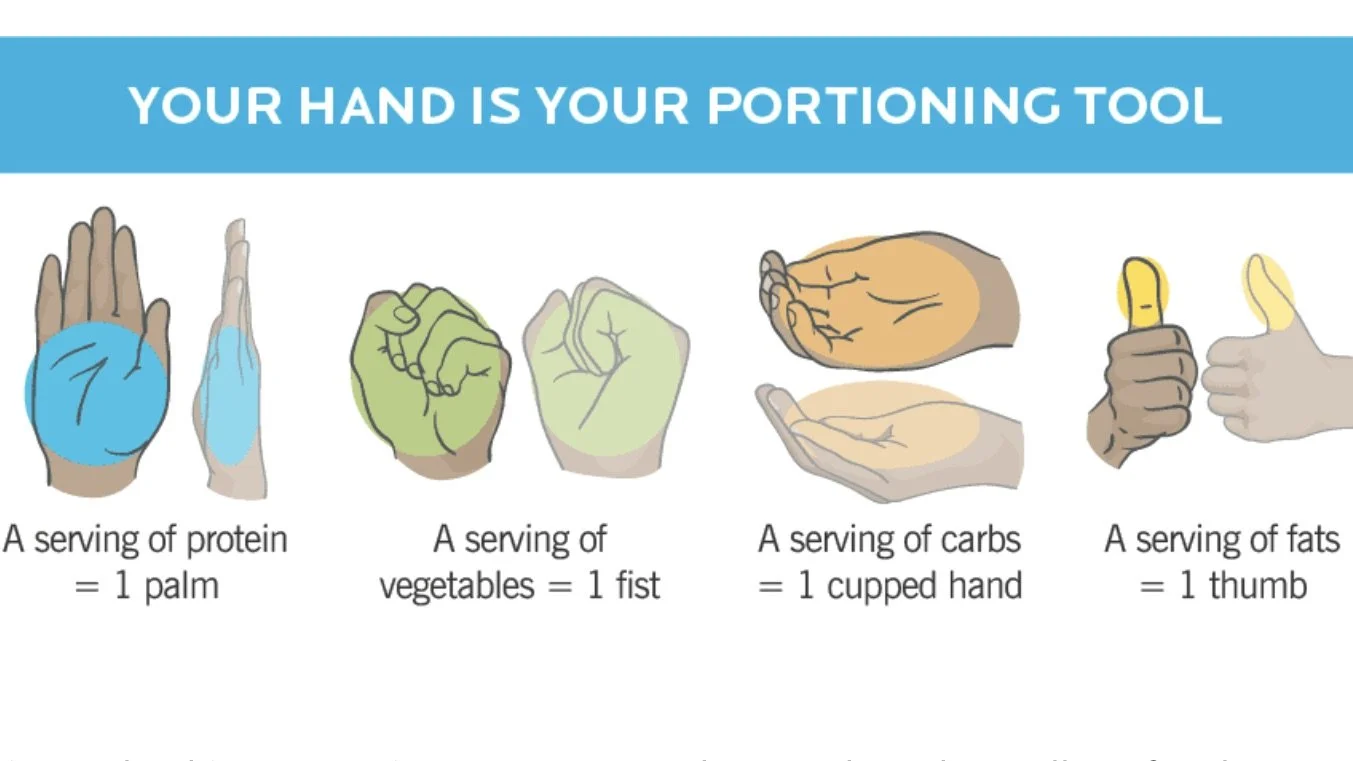Six Performance Nutrition Strategies for Firefighters
By Ryan Provencher
Just as athletes rely on nutrition to perform at their best, we need to fuel our bodies effectively to meet the demanding physical and mental challenges of our profession.
Proper nutrition is essential for maintaining energy levels, enhancing strength and endurance, promoting muscle recovery, and bolstering immune function. This comprehensive guide explores key performance nutrition strategies for firefighters, providing practical tips and insights to help you achieve your fitness and performance goals.
Six Basic Performance Nutrition Strategies
1. Build Your Meal Plan Around Whole Foods
Building your meal plan around whole foods is the foundation of a healthy diet. Whole foods are unprocessed and unrefined, retaining their natural nutrients. These include fresh fruits, vegetables, meats, dairy, eggs, and whole grains. Shopping the outer perimeters of the grocery store is a good strategy to find these fresh foods. By avoiding additives, sugars, and chemicals, you ensure cleaner, more nutritious eating habits.
2. Ensure Adequate High-Quality Protein
Protein is crucial for muscle repair and growth, making it an essential part of a firefighter's diet. High-quality protein sources include meat, dairy, eggs, and fish, which contain all essential amino acids and are highly digestible. For those on a plant-based diet, it's important to consume a variety of protein sources like beans, lentils, tofu, and quinoa to ensure sufficient intake of essential amino acids.
3. Eat the Rainbow
Consuming a variety of colorful fruits and vegetables ensures a broad spectrum of nutrients. Each color represents different vitamins, minerals, and antioxidants, contributing to overall health and reducing inflammation. This can help lower the risk of chronic diseases such as heart disease and cancer, which are prevalent concerns given the stress and exposure firefighters face.
4. Reduce Sugar Intake
Excessive sugar consumption is linked to obesity, diabetes, and heart disease. Many foods marketed as healthy, like granola bars and fruit juices, contain hidden sugars. Reading nutrition labels can help you avoid these pitfalls and maintain a balanced diet. Aim to reduce or eliminate sugar where possible.
5. Limit Alcohol Consumption
Alcohol can negatively impact health and performance. It contributes to increased caloric intake, obesity, cancer risk, and sleep disruption. While it's often used socially to unwind, moderation is key. Consider the impact of alcohol on your fitness goals and overall health, and make informed decisions about its place in your diet.
6. Stay Hydrated
Hydration is critical for firefighters due to the intense physical exertion and extreme heat encountered on the job. Dehydration can impair cognitive function, reduce physical performance, and increase the risk of heat-related illnesses such as heat exhaustion and heat stroke. Adequate hydration maintains blood volume, supports muscle function, and aids in regulating body temperature. Drinking water regularly throughout the day and monitoring hydration levels can help prevent dehydration.
Consistently adhering to these six basic strategies will help you maintain a healthy weight, reduce the risk of chronic diseases, and improve overall fitness. This, in turn, enhances your ability to handle the physical and mental demands of firefighting. Incorporating nutritious eating habits supports long-term health and performance, ensuring that you are well-prepared for the challenges you face each day.
Two Advanced Performance Nutrition Strategies
For those with specific body composition and performance goals, you might benefit from more advanced performance nutrition strategies related to tracking macronutrients and counting calories. Let’s begin with a few definitions:
Calorie: A unit of measurement that indicates the amount of energy provided by food and drinks.
Macronutrient: Nutrients required in large amounts for energy and bodily functions, including proteins, carbohydrates, and fats.
Protein: A macronutrient essential for building and repairing tissues, producing enzymes and hormones, and supporting immune function. Each gram of protein provides 4 calories.
Carbohydrate: A macronutrient that serves as the body's primary source of energy, found in foods like bread, rice, fruits, and vegetables. Each gram of carbohydrate provides 4 calories.
Fat: A macronutrient that provides long-term energy, supports cell growth, and protects organs, found in foods like oils, nuts, and avocados. Each gram of fat provides 9 calories.
Tracking Your Macros: Two Strategies
1. The Hand Portion Method
The Hand Portion Method is a simple and practical way to estimate portion sizes using your hand. This guide can help ensure balanced nutrition without the need for precise measurements. Here’s an overview:
Protein: One palm-sized serving per meal. Protein is essential for muscle repair and growth. A palm-sized portion (about 20-30 grams) per meal helps meet daily protein needs.
Vegetables: One fist-sized serving per meal. Vegetables provide essential vitamins, minerals, and fiber. A fist-sized portion ensures you get enough nutrients and feel full without consuming too many calories.
Carbohydrates: One cupped hand-sized serving per meal. Carbohydrates are the body’s primary energy source. A cupped hand-sized portion (about 20-30 grams) ensures adequate energy for workouts and daily activities while supporting fat loss.
Fats: One thumb-sized serving per meal. Healthy fats are crucial for hormone production and overall health. A thumb-sized portion (about 7-12 grams) per meal helps maintain a balanced diet without excessive calorie intake.
This graphic is from Precision Nutrition:
Additional Tips:
Meal Frequency: Aim for 3-6 balanced meals per day.
Hydration: Drink plenty of water throughout the day to support metabolism and overall health.
Consistency: Stick to this guide consistently while adjusting based on progress and individual needs.
By following the Hand Portion Method, you can manage portion sizes effectively, supporting fat loss and muscle gain goals with balanced nutrition.
2. The Harris-Benedict Formula
For those interested in doing a deeper dive into counting calories and tracking macronutrients, the Harris-Benedict Formula is very effective. The Harris-Benedict Formula calculates Basal Metabolic Rate (BMR) based on weight, height, age, and sex, and then adjusts for activity level to determine Total Daily Energy Expenditure (TDEE). Here’s a basic nutrition guide for men and women using this formula.
Harris-Benedict Formula:
For Men: BMR = 88.362 + (13.397 × weight in kg) + (4.799 × height in cm) − (5.677 × age in years)
For Women: BMR = 447.593 + (9.247 × weight in kg) + (3.098 × height in cm) − (4.330 × age in years)
Step-by-Step Guide:
Calculate BMR:
Convert weight from pounds to kilograms (1 kg = 2.2 lbs).
Convert height from inches to centimeters (1 inch = 2.54 cm).
Use the respective formula for men and women.
Calculate TDEE:
Multiply BMR by the appropriate activity factor:
Sedentary (little or no exercise): BMR × 1.2
Lightly active (light exercise/sports 1-3 days/week): BMR × 1.375
Moderately active (moderate exercise/sports 3-5 days/week): BMR × 1.55
Very active (hard exercise/sports 6-7 days a week): BMR × 1.725
Super active (very hard exercise/sports and a physical job): BMR × 1.9
Create a Caloric Deficit/Surplus:
For fat loss: Subtract 500 calories from TDEE.
For muscle gain: Add 500 calories to TDEE.
Macronutrient Distribution:
Protein: 1 gram per pound of body weight.
Fats: 0.4 grams per pound of body weight.
Carbohydrates: The remainder of the calories.
This guide can be adapted for different caloric needs and preferences, ensuring balanced nutrition and supporting fat loss and muscle gain goals.
Additional References and Resources:
Precision Nutrition: Should you track your Macros?
Precision Nutrition: Ultimate Macro Calculator
Cronometer: Nutrition Tracker
Proper nutrition is not just about maintaining energy levels and enhancing strength; it is a cornerstone of overall health and performance for firefighters. By following these six basic performance nutrition strategies—focusing on whole foods, ensuring adequate protein, eating a variety of colorful fruits and vegetables, reducing sugar intake, limiting alcohol consumption, and staying hydrated—you can support your body’s needs and meet the demanding physical and mental challenges of the job.
For those with specific body composition and performance goals, advanced strategies like tracking macronutrients and counting calories can provide additional benefits. By using the Hand Portion Method or the Harris-Benedict Formula, you can tailor your nutrition to support fat loss and muscle gain more precisely.
Whether you choose a more detailed approach or stick with the basics, the key is consistency and a commitment to fueling your body with the nutrients it needs to perform at its best.
For personalized nutrition advice tailored to your needs and goals, consider consulting a qualified nutritionist. If you have underlying medical conditions that require specific nutritional support, a registered dietitian can provide expert guidance.
Ryan Provencher is an Operations Battalion Chief with over 30 of Fire Service experience. He holds a Bachelor of Science in Kinesiology and Exercise Science with a Minor in Nutrition from Washington State University. He has extensive experience as a Fire Department Peer Fitness Trainer and Health/Fitness Coordinator, he is the founder of Firefighter Peak Performance and serves as Executive Fitness Advisor for CRACKYL Magazine.


